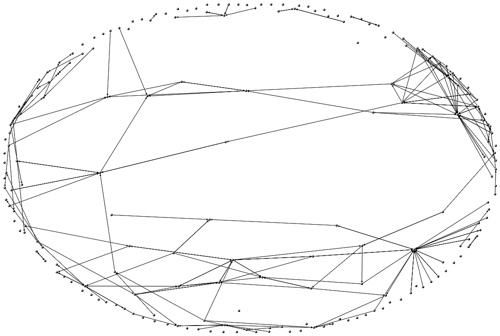Digital Personal Networks

In the contemporary organisation setups, there is an enhancing demand to attach to internal firm networks from diverse locations (Natarajan, Muthiah, & Nachiappan, 2010). It is an usual demand that workers connect to personal networks by means of the net from residence, field terminals, or while on transportation in the airport terminal, or exterior networks. The nature of the web is troubled (Stewart, 2013; Lim et al., 2001). Thus, protection is the major problem of worry to business when employees, clients, and company partners have constant connections to inner networks from distant places. Digital exclusive networks provide a modern technology that protects that information being moved using the internet. VPNs enable individuals to establish an online private passage where to access information, resources, and also communications in internal networks through the internet (Paul, 2000). This essay supplies an introduction of VPN and the core tunneling protocols utilized to enhance protection, with a focus on Layer 2 Tunneling Protocol.
Introduction
Virtual Private Network (VPN) is a type of exclusive network that utilizes public telecommunication, such as the internet, rather than rented lines, to connect (Natarajan, Muthiah, & Nachiappan, 2010). Digital exclusive networks came to be prominent with the increase in the variety of staff members operating in remote places. Virtual ways not physically-present, exclusive methods not public, which network is a system of digital interaction between two or more tools. The web is the backbone for digital personal networks. The inspiring variables for the introduction of VPNs by companies are that virtual personal networks conserve prices tremendously as well as minimize upkeep as well as equipment expenses (Rubin, 2003). The two basic attributes of VPNs are protection and also scalability. Modern online exclusive networks get rid of dangers to protection via using special tunneling protocols.
Exactly How VPNs Run
Online personal networks call for a web connection as the foundational platform for sharing resources, interactions and also data (Stewart, 2013). Online Private Network transfers data via a mechanism called tunneling. Before transmission, a package covered or encapsulated in a new package that has a new header. The header has routing info that permits it to pass through a public or shared network amidst before reaching the endpoint of the passage. A tunnel is rational route or course where encapsulated packages travel.
Packets are de-capsulated when they get to the endpoint of the passage, and also are forwarded to the last destination (Stewart, 2013). The two passage endpoints must support the same tunneling procedure. Tunneling methods run or operate at either of the layers of Open System Affiliation (OSI), i.e. data-link (layer two) or network layer( layer three). There are four frequently used tunneling methods, i.e. PPTP, IPsec, L2TP, as well as SSL. A package that has a private non-routable IP address can be sent wrapped in a package with around the world one-of-a-kind IP address, thus extending a personal network over the internet.
In regard to safety, VPN uses file encryption to ensure the privacy of data (Bacon et al., 2002). The online exclusive network uses the tunneling mechanism to cover or envelop encrypted data into a secure tunnel with open headers that have the potential to go across public networks. Packages of data passed communicated via a public network with this approach could not be read without proper decryption keys. Therefore, the mechanism ensures that information is not changed or revealed in the middle of transportation via the public network.
Virtual exclusive networks likewise offer data honesty check (Stewart, 2013). Generally, the check is carried out through a message-digest that makes sure that data has actually not been modified or tampered within the procedure of transmission. The default nature of virtual personal networks is that it does not impose or supply a solid individual authentication. Therefore, individuals can make use of straightforward usernames and also passwords to get access into inner networks from different geographically distributed locations or various other networks. Nevertheless, online personal networks support add-on authentication such as symbols, smart cards, etc
. Release of VPNs
Enterprises and companies deploy VPNs with Remote Accessibility VPN, Intranet VPN, Extranet VPN, or WAP Substitute( Bacon et al., 2002).
Remote Access VPN
Remote gain access to VPN is a user-to-network connection for the residence or mobile customer connecting to company networks from a remote place. It permits encrypted links between remote users as well as company exclusive network.
Intranet VPN
Intranet VPN is a link amongst fixed locations. Intranet VPN is LAN-to-LAN VPN link that signs up with remote places such as branch workplaces right into a single exclusive network. LAN means Lan.
Extranet VPN
Extranet VPN is a kind of connection that links services companions such as customers as well as vendors, enabling the different parties to function, communicate, or share data within a shared atmosphere.
WAN replacement
In WAN replacement, VPNs offer an alternative for Wide Area Networks (WAN)( Bacon et al., 2002). Nevertheless, preserving WANs are expensive, particularly in cases where networks are distributed geographically. The application of VPNs reduces costs and gets rid of management expenses. On top of that, it gives improved scalability as compared to traditional exclusive networks. However, the efficiency and dependability of networks could become a trouble, specifically when links and also information are tunneled by means of the web.
Tunneling Protocols
4 tunneling technologies are frequently made use of in online exclusive networks. For this discussion, considerable description is offered for L2TP.
Layer 2 Tunneling Procedure (L2TP).
Layer 2 Tunneling Procedure is an old method that has actually largely been changed by SSL/TSL as well as IPSec VPNs in the production settings (Stewart, 2013). Nevertheless, the method might still remain in solution in certain settings in which backward compatibility could be an issue. Thus, it is feasible to come across it in the scholastic literary works. L2TP was used thoroughly in typical VPN solutions yet lost its appeal as other protocols ended up being much more functional as industry standards developed. For the very first time, L2TP was consisted of in a Microsoft server product with the intro of Windows 2000 web server (Ibid).
L2TP incorporates Point-to-Point Tunneling Method as well as Layer 2 Forwarding (Popescu, 2010). L2TP can encapsulate PPP required to be sent with IP, ATM MACHINE networks, or Frame Relay. In this protocol, several links are enabled through one tunnel. In a comparable means as PPTP as well as L2F, Layer-Two tunneling procedure operates on OSI layer 2. Layer 2 VPN protocols wrapped data in PPP structures and could transfer non-IP methods using an IP network.
Layer-two tunneling procedure applies the very same devices of verification as PPP connections, such as PAP, EAP, and others (Bacon et al., 2002). Tunneling that uses L2TP is realized through multiple levels of encapsulation. PPP information is wrapped or encapsulated in an L2TP header as well as a PPP header (Stewart, 2013). The L2TP wrapped package is additionally encapsulated within a UDP header with the resource port as well as destination port readied to 1701. The final packet is covered with an IP header with the web server and also customer’s resource and destination IP addresses (Bacon et al., 2002). There is constantly an absence of discretion with making use of L2TP. L2TP just offers a mechanism for creating tunnels through IP network, yet does not give a device for the encryption of information being transported. Thus, L2TP is typically utilized together with IPSec as well as, hence, referred to as L2TP/IPSec. Safety services are offered by IPSec, ESP, and AH, when L2TP is running over IPSec. L2TP information and controls appear as uniform data packets to the IPSec system.
It is unusual to run into L2TP in contemporary manufacturing settings (Stewart, 2013). Nonetheless, the standard ideas of the method are necessary for recognizing the loved one importance of the procedures usual in contemporary atmospheres and recognizing digital networks as a whole.
Various Other Tunneling Protocols.
IPSec (Net Protocol Protection).
The Net Engineering Task Force, IETF, created IPSec for protected transfer of data at the OSI layer three via the internet or various other unprotected public IP networks (Popescu, 2010). IPSec allows a network to pick and bargain the needed safety methods, secret keys, and also algorithms to be utilized. IPSec supplies standard authentication, file encryption, as well as data stability to ensure unauthorized viewing or alteration of information. IPSec utilizes two protection methods, i.e. ESP (Encapsulated Protection Payload) as well as AH (Authentication Header) for the needed services. However, IPSec is limited to sending out just IP packets.
Point-to-Point Tunneling Protocol (PPTP).
Point-to-Point Tunneling Method is an OSI layer-two procedure built on Point-Point Procedure (PPT) (Popescu, 2010). Point-to-Point protocol is a dial-up procedure that makes use of several procedures to connect to the net. Individuals linking to VPN from remote areas can access the internet through PPTP. However, they need to initially dial into the local ISP. PPTP permits a PPP session with methods that are non-TCP/IP for tunneling through an IP network. The same system of authentication made an application for PPP links is sustained in the PPTP-based VPN link.
SSL/TSL.
Safeguard Sockets Layer (SSL) is a transport layer protocol that applies Transmission Control Protocol (TCP) port 443 (Popescu, 2010). IETF specifies SSL method and its variations (Autumn & Stevens, 2012). The standard versions of SSL consist of TSL 1.0, TSL 1.1., and TSL 3.1, which is the same as SSL 3.1 (Bacon et al., 2002). Variations of SSL do not surpass SSL 3.1. SSL/TSL offers a variety of cryptographic functions (Ibid). These functions include integrity, discretion, as well as electronic trademarks. Unlike IPSec, where the interacting events accept cryptographic functions, SSL/TSL applies cipher collections to establish or define cryptographic features for the web server as well as client to use to interact.
SSN VPN entrances could self-authenticate to the internet customer with making use of an SSL server certificate authorized by a qualified Qualification Authority (CA), in order for the user to prove that the web server they is connecting with through an internet browser is trusted (Stewart, 2013). In typical scenarios, some SSL digital personal networks might make use of a self-signed electronic certificate, which is relied on most web internet browsers. In comparable instances, individuals can include the SSL virtual exclusive network server certificate to their listing of relied on certifications.
Threats as well as Limitations of VPNs.
Risks associated with making use of VPNs connect to virus or malware infections, client-side threats, individual verification, and hacking strikes (Bacon et al., 2002).
Hacking: Customer equipments may become targets of attacks or staging factors for strikes from within the staging network. Intruders can manipulate incorrect arrangements or insects in customer equipments, and various other hacking tools to release different sorts of assaults such as VPN hijacking.
Customer verification: VPN does not implement or give authentication. The VPN link is only established by the client. Weak authentication could enable unauthorized celebrations to enter the connected network.
Client-side dangers: VPN customer equipments could be linked to the internet with a broadband connection while, at the same time, connected to a VPN link to a private network, by means of split tunneling. Such links position dangers to personal networks included.
Malware infections: An exclusive network may be compromised if the client side attaching to the network has malware, which might cause leak of the password for VPN link.
Conclusion.
Virtual Private Networks supply a system to access a secured private network using insecure public networks such as the net. The common VPN tunneling modern technologies are IPSec, SSL, L2TP, and PPTP. The focus of this conversation was on L2TP. Although it is possible to open and also tunnel a safe and secure communication channel via unconfident public networks, the protection of the connection must not be ignored, specifically from the customer side.
Recommendations.
Bacon, J., Beduya, L., Mitsuoka, J., Huang, B., Polintan, J. (2002 ). Digital Exclusive Network. Northridge, CA: The Golden State College.
Fall, K.R. & Stevens, R. (2012 ). TCP/IP Illustrated, Volume 1: The Methods. Upper Saddle River, NJ: Pearson Education.
Lewis, M. (2006 ). Comparing, making and deploying VPNs. Cisco Press.
Lim, L.K., et al. (2001 ). Adjustable online exclusive network service with QoS. Computer system Networks, 36: 137-151.
Natarajan, M.C., Muthiah, R., & Nachiappan, A. (2010 ). Efficiency examination of VPNs with various bandwidth allotments. IJCSI, 7( 1 ): 58-63.
Paul, B. (2000 ). MPLS Virtual Private Networks. Enfield, UK: Information Link Limited.
Popescu, G. (2010 ). A comparative analysis of secure VPN tunneling protocols, JMEDS, II (2 ): 91-100.
Rubin, A.D. (2003) “Wireless Networking Safety And Security.” Communications of the ACM, 46( 5 ): 29-30.
Stewart, M. (2013 ). Network Protection, Firewalls as well as VPNs. Burlington, MA: Jones & Bartlett Learning.










